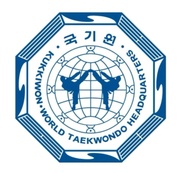History of Taekwondo

History of Taekwondo
Taekwondo history - from Kukkiwon website
Taekwondo is a martial art sports formed and developed in Korea. Therefore, the history of Taekwondo can be broadly dealt with in the context of Korean history.
Tradition of Taekwondo, Korean Bare-handed Martial Arts History(Ancient~1945)
Ancient Times(24th century BC-10th century AD)
In ancient times, children and adults were actively encouraged to learn martial arts because they were battle techniques that individuals and groups relied on for survival. In other words, since martial arts became a means of personal advancement and a matter of survival for the nation, they enjoyed significance in ancient society.
Medieval times(10th century AD-16th century AD)
Historical books of the Medieval era specifically recorded the activities of Subak(Subakhee), which is a bare-handed combat martial art. There are many records of Subak even in the Joseon Dynasty, and it is said that it was widely practiced not only by soldiers guarding the king, but also by the general public.
Modern times(17th century-1945)
The period from the time of upheaval after both invasions until the Japanese occupation is categorized as modern times. The characteristic of this period is that military martial arts such as “Kwonbeop”(martial art of the fist) were established due to the wars and the invasions, and “Taekkyeon” also appeared as various folk games venerating martial arts were developed due to the spread of popular culture.
During the Japanese occupation period, judo and kendo were introduced to Korea. Meanwhile, as people either learned Manchurian martial arts or studied in Japan at the end of the Japanese occupation period and learned Tangsoo, it became a new turning point in introducing foreign martial arts to Koreans.
Modern Taekwondo history
Early Taekwondo(1946~1960)
Immediately after liberation, foreign martial arts were introduced by Koreans, and the Five Kwans(the five major martial art schools) were established. As the years went by, new techniques focused on kicking inspired by Taekkyeon were developed and began to establish Korean characteristics. The formation of an association was pushed forward from the early days of the Five Kwans. After the Korean War, while Kwans flourished in Korea, the name “Taekwondo”appeared, and an integrated was promoted. The period from 1946, when the Five Kwans were established, to 1960, when the formation of as association was attempted, is termed the “early days of Taekwondo”.
The fruit of unity(1961-1970)
The April 19 Revolution and May 16 Coup that broke out in the early 1960s served as an opportunity for innovation in the Taekwondo world. With the arrival of the new government, the long-awaited task of integrating similar organization was pushed forward and the official association was finally established. The accredited dan promotion tests were united because they were hosted under the association. The independent Sparring matches were adopted as official games in the 44th National Sports Festival in 1963. As for Poomsae, which was used for the dan promotion test, new information was enacted at the association level. The distribution of Taekwondo overseas began in the 1960s, and it spread to Asia, Europe, and the US.
A leap forward(1971~1985)
In the 15 years since 1971, Taekwondo, led by the association, made a leap domestically and internationally. At the beginning of the period, the president’s brush pen writing of “Kukki Taekwondo(national martial art Taekwondo)”solidified the foundation of Taekwondo domestically. Moreover, as Kukkiwon was established and as it joined GAISF, holding the World Taekwondo Championships, Taekwondo joined the ranks of International sports in just 2 years. Additionally, as it was included in the official currriculum for public education in elementary, middle, and high schools according to government policy, and as it also received the spotlight as a material for popular culture, the expansion of its base was expedited. Taekwondo academic theories were also pursued with the establishment of Taekwondo majors at various universities.
Entry into the Olympic Games(1986-1999)
After Taekwondo was held as an official sports event at the 1986 Asian Games in Seoul and as an official event in the Seoul Olympics in 1988, the progress regarding it being a part of the Olympics accelerated. Since then, Taekwondo’s status as an internationally recognized sport gradually increased, and it was confirmed as an official event for the Sydney Olympics in 1994 at the IOC General Assembly. In the 1990s, “Taekwondo Hanmadang” was established and Taekwondo was selected as one of Korea’s top 10 cultural symbols.
World-class martial sports(2000~)
Taekwondo is gaining power as a martial art for self-defense and health as well as mental training, and as an Olympic sport that provides opportunities for success in life. Taekwondo has been confirmed as a national martial art in Korea, the country of its origin.

Welcome
Congratulations on taking your first step in improving your mental, spiritual and physical health through taekwondo. If you have any questions, do not hesitate to contact us.
